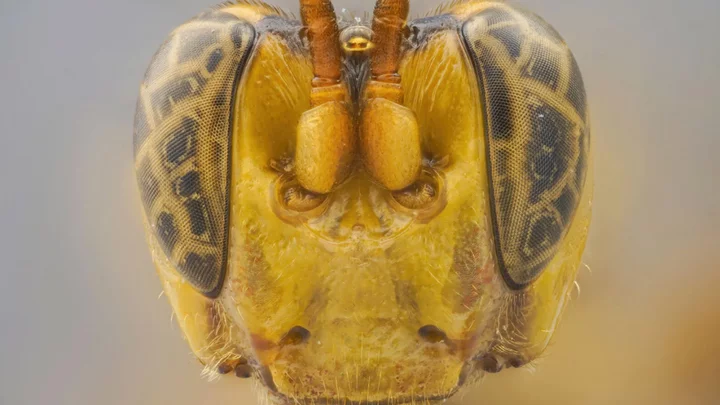A parasitic wasp with a giant head has been discovered and it's the stuff of nightmares
Scientists have unearthed a new species of wasp in the Amazon – and it's rather terrifying. The alien-looking parasitic creature came to light when a team at Utah State University were researching Allpahuayo-Mishana National Reserve in Peru. The wasp, known as Capitojoppa amazonica, has a giant almond-shaped head and is known to latch on to prey before sucking its blood and then eating it from the inside. It does so by laying eggs in its victims including caterpillars, beetles and spiders. The study’s lead author, biologist Brandon Claridge called the practice a "solitary endoparasitoid". "Once the host is located and mounted, the female will frantically stroke it with her antennae," Claridge told Live Science in an email. "If acceptable, the female will deposit a single egg inside the host by piercing it with her ovipositor (a tube-like, egg-laying organ)." He went on to explain that in some instances, "females will even stab the host with the ovipositor and feed without laying an egg as it helps with gaining nutrients for egg maturation." This isn't the first horrifying discovery, with researchers recently finding a new species of tarantula in Thailand that is characterised with illuminous blue legs. The spider is one of the rarest in the world, with Dr Narin Chomphuphuang explaining how it lurks in hollow trees. "The difficulty of catching an electric-blue tarantula lies in the need to climb a tree and lure it out of a complex of hollows," he explained. "During our expedition, we walked in the evening and at night during low tide, managing to collect only two of them." Sign up for our free Indy100 weekly newsletter Have your say in our news democracy. Click the upvote icon at the top of the page to help raise this article through the indy100 rankings.
Scientists have unearthed a new species of wasp in the Amazon – and it's rather terrifying.
The alien-looking parasitic creature came to light when a team at Utah State University were researching Allpahuayo-Mishana National Reserve in Peru.
The wasp, known as Capitojoppa amazonica, has a giant almond-shaped head and is known to latch on to prey before sucking its blood and then eating it from the inside.
It does so by laying eggs in its victims including caterpillars, beetles and spiders. The study’s lead author, biologist Brandon Claridge called the practice a "solitary endoparasitoid".
"Once the host is located and mounted, the female will frantically stroke it with her antennae," Claridge told Live Science in an email.
"If acceptable, the female will deposit a single egg inside the host by piercing it with her ovipositor (a tube-like, egg-laying organ)."
He went on to explain that in some instances, "females will even stab the host with the ovipositor and feed without laying an egg as it helps with gaining nutrients for egg maturation."
This isn't the first horrifying discovery, with researchers recently finding a new species of tarantula in Thailand that is characterised with illuminous blue legs.
The spider is one of the rarest in the world, with Dr Narin Chomphuphuang explaining how it lurks in hollow trees.
"The difficulty of catching an electric-blue tarantula lies in the need to climb a tree and lure it out of a complex of hollows," he explained. "During our expedition, we walked in the evening and at night during low tide, managing to collect only two of them."
Sign up for our free Indy100 weekly newsletter
Have your say in our news democracy. Click the upvote icon at the top of the page to help raise this article through the indy100 rankings.

